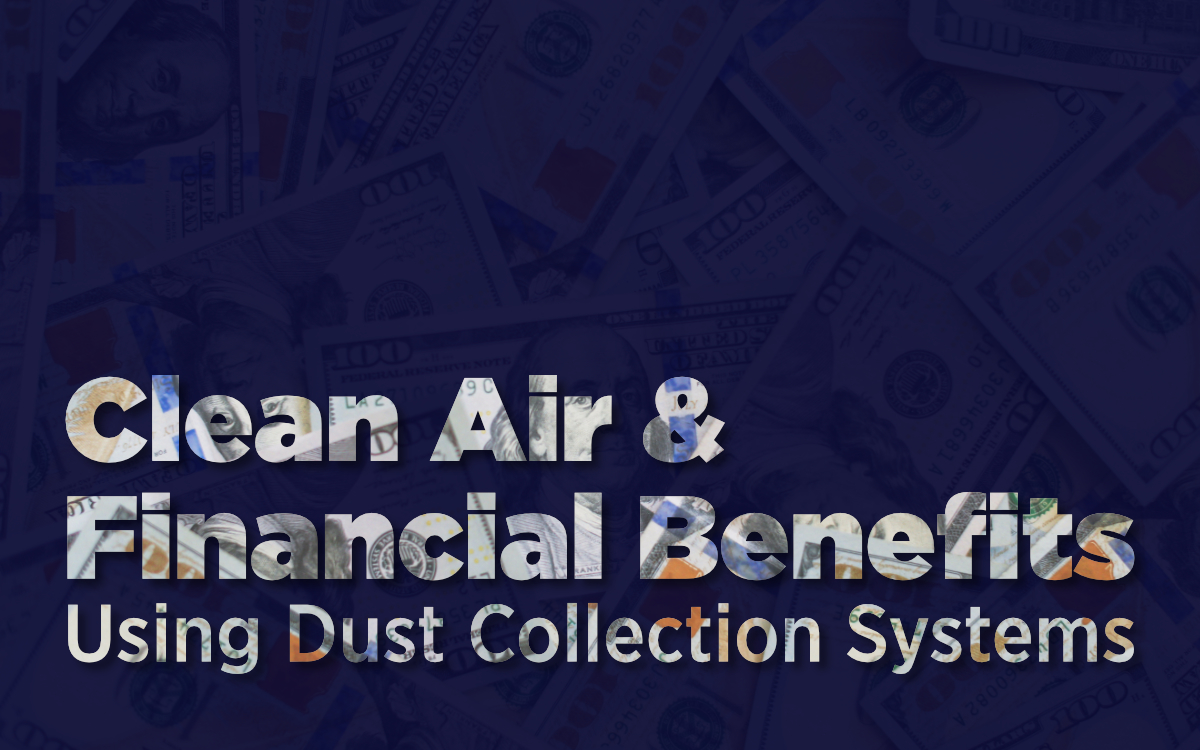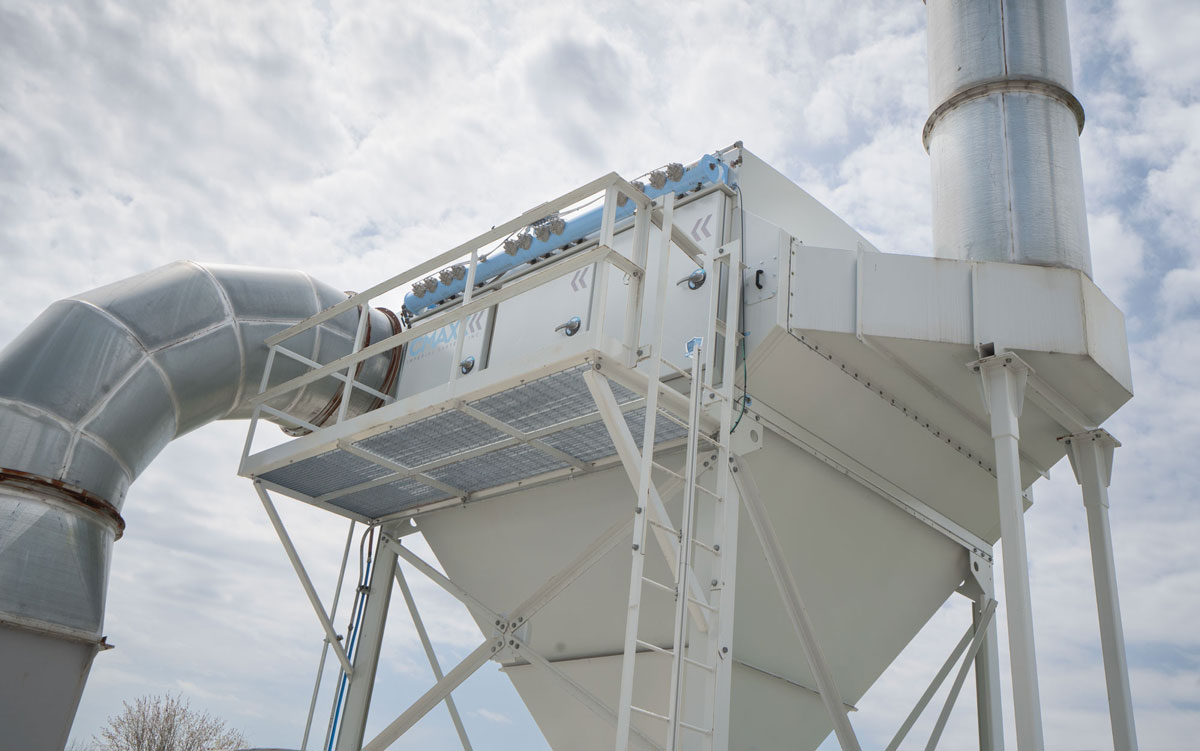In this episode of the Dusty Jobs Podcast Fabtech 2023 Edition, Donovan talks with Chris Phillip from AKS Cutting Systems. This is the second time Chris has been on the podcast. This first time Chris was on he told us about the history of AKS Cutting. On this episode Chris talks about their new developments on display at Fabtech.
Narrator: Welcome to the Dusty Jobs podcast from Imperial Systems. Industry knowledge to make your job easier and safer.
Donovan: Hello and welcome to another episode of the Dusty Jobs podcast. Today Chris is back with us again from AKS Cutting Solutions. How are you guys doing over there?
Chris: Good we’re doing really well. This has been no joke the best show that we’ve had in the last four or five years.
Donovan: That’s great that’s great. Now if people aren’t familiar with AKS they can go back and listen to the other podcast that you and I did together but give us a little information a little sum up about what AKS is and what you guys do.
Chris: Sure so we are based out of Cleveland, Ohio. We have a pretty large facility there, 55,000 square feet. We’re a fourth generation family owned business. My dad is currently the president. My great-grandfather bought the company. My grandfather ran the business for 50 years. So he just retired a couple of years ago. We talked about him quite a bit in our last one. So we manufacture CNC tables, right? We know how to move a tool really well and put it in the right spot. Right now the tools we integrate are plasma and water jet. And then we have all sorts of different little add-ons and features that we can put on top of that to increase the capacity and capabilities of the system.
Donovan: So yeah. So anybody who’s not familiar the big sheet of metal comes in. Lots of parts and pieces need cut out of that. And then instead of doing it by hand you guys can program it into a machine that cuts it out.
Chris: Exactly.
Donovan: That explains it pretty simply right?
Chris: Right. You got that right. So basically every weldment in the world is going to start with big pieces of material that you got to make smaller. Yeah. And then you’re going to put them back together. Right. Right. It’s kind of a weird little thing. Additive manufacturing really is just welding. And then there’s also 3D printing. It’s mainly welding. Subtractive manufacturing. Cutting stuff up and sheening things down. Doing stuff to a big piece and making it smaller. That’s the side that we play on. So basically any shop in the world, any fabricating facility in the world, they’re going to bring in bar stock. They’re going to bring in sheet. They’re going to bring in their raw materials. And the first thing they want to do is make it small. That’s why you put a plasma table right next to your back door. So you bring in the big stuff, toss it on there, cut it out, make it small, and then give it off to the welders.
Donovan: Yeah, that is the workflow of a lot of shops. So what’s new with AKS in the realm of plasma tables?
Chris: Sure. So we’ve released two new products in the last year. One being the Plasmatic and the other being the Plasmatic Pro. We’re demoing the Plasmatic in our booth A3525, and it’s been received very well. We’ve actually sold a couple of them here at the show.
Donovan: So what makes the Plasmatic different than just the standard table that you guys have had in the past?
Chris: Not much actually. Other than the price point. It’s quite a bit cheaper. So what we’ve done is we’ve reduced some material weight. We’ve centralized some elements like the electrical cabinet and the drive package and whatnot. And we are using some smaller drives because we know that we’re not going to load up the machine with as much weight of tools and stuff. It is a dedicated plasma cutting system. And it’s definitely going to be a big player in the light industrial market.
Donovan: Nice. So you guys have figured out how to make a machine that’s geared towards a certain size of application and really just make it as economical as you can. Not sacrifice on any quality, just taking everything you can and making it a really economical for those small shops that maybe are just getting into their first plasma table. Is that what you’re looking at?
Chris: Exactly. You’ve got a shop and you want to get a plasma table and you don’t want to get a bolt together machine. You want to get something that’s solid, but you don’t want to have to spend $300,000, $400,000. That’s exactly what the Plasmatic is for. It’s for that shop that has 10, 15, 20 guys or a maintenance facility for a large shop or all sorts of those guys that are going to maybe use it 10, 15 hours a week. But they want to know that they have the durability that if they bump it with a tow motor, it’s going to be okay.
Donovan: There you go. So someone who’s thinking about getting a plasma table, what’s some of the things that maybe they’re a little scared of that really they shouldn’t be? Like what are some concerns you guys hear a lot about getting a plasma table?
Chris: I think the biggest one that they shouldn’t be concerned about is how difficult it is to operate the system. I can take anybody here and in about five minutes they can be running a Plasmatic.
Donovan: Oh really?
Chris: Yeah.
Donovan: So sometimes people are intimidated by the controls, but with you guys, not a big deal.
Chris: No, not a big deal at all. If you got a guy who wants to work and use that machine, I can teach him how to do it very, very quickly. New guys straight into the from the, you know, right new to the workforce. No issue.
Donovan: So what’s the big difference between the Plasmatic and the Plasmatic Pro then?
Chris: So the Plasmatic Pro is going to include fully encoded servos. And that’s going to allow us to utilize the Hypertherm XPR series of plasma power supply. The Plasmatic, the base model, that’s going to utilize the PowerMax sync series of handheld torches. And then we get the mechanized ones for the, for our CNC system. The Plasmatic Pro is going to have a little bit more powerful drives, a little bit bigger motors, and that’s going to allow it to have the necessary XLD cell to get what you want out of an XPR series.
Donovan: So it’s kind of like it’s saying it’s the pro it’s stepping it up a little bit one more level. For when you have a heavy, more heavy duty application.
Chris: Yep. So that’s going to go the power, the Plasmatic is limited to the Max Pro 200, which will give you about two inch mild steel piercing capacity. Okay, the XPR 300 is going to get you to around three inches. It’s also going to be your high def or as Hypertherm likes to call it their extreme definition of plasma cutting. And it looks pretty good. I’ll put it against any laser part past half inch.
Donovan: Oh, wow, that’s great. So you were talking a little bit earlier about that it’s not, it’s not the hardest thing in the world to learn how to run a plasma table. So today with the show, we usually have a lot of students that are walking around and a lot of them are welders. And I mean, do you think that there’s for how many tables you guys sell? I mean, this is a legitimate occupation someone can be for certain, right plasma table operator?
Chris: You just gave me a really good idea. Actually, I’m going to 100% grab multiple students today and video teaching them how to run the Plasmatic that I can that would be great cut apart in three minutes. Yeah, watch them go. Wow, I can do this. Yeah, because they 100% can. Anybody can.
Donovan: Yeah, because I mean, when I was in high school, that wasn’t something my guidance counselor was telling me about, right? I mean, they’re occupations. But I know we’re always looking for guys that have somewhat of an experience in that, you know, in a plasma table. And what do you think would be the if someone’s out there thinking about maybe I could do this, what would be some advice you would give them is there places they can learn.
Chris: If they’re in Cleveland, Ohio, give me a call.
Donovan: Okay. So, so you can, well, how would they do that? How would they get ahold of AKS? What’s the best way to get ahold of you guys?
Chris: Best ways right through our website. Okay. Yep, 100%. I actually get all those emails. So I’ll see it. If you want a job with a plasma table, and you’re in Cleveland, please give me a call.
Donovan: And then, but do you guys have resources too? Maybe someone just wants to look into what it’s like.
Chris: We actually have a whole training library on our website of how to set up and install a Plasmatic system in particular. And they’re all chopped up in the two three minute videos, we’ve about 30 of them on our plasmaticusa.com. And right there, you can access those videos. And you can see what it actually takes soup to nuts to install a plasma table. And you’ll realize, takes about three hours.
Donovan: Yeah, well, that’s not, that’s not even that long when you’re talking about a big piece of equipment. Like that.
Chris: There’s no floor prep required for it. You just take a nice little scale, put it on the sides, level up the machine tool, fill it up with that model currently has some water. The pros also going to be a downdraft system as well. Right. But the current model is a water table. And you can be up and running in just a couple hours.
Donovan: That’s phenomenal. Yeah. So, so that’s great, because I know with a lot of people entering the workforce and trying to figure out what they want to do. I mean, plasma table operator is, is a lot of people are trying to figure out what they want to do. And plasma table operator is great.
Chris: It’s a great gig. It’s a good gig. You’re probably going to go if you were to join the workforce and go run a plasma table within three years, somebody’s going to start teaching how to weld. And then you’re going to go be a welder. And then you’re going to go be a shop manager. Then you’re going to run that facility. And you can have a – you can easily live your entire career in a fab shop and make good money doing it. If you look around and you see things around you, I was made somewhere in a shop.
Donovan: Yeah. If it’s out of metal, it’s probably been cut on the table and put together by somebody. So that’s great. That’s great. So what’s the – is there anything coming out in the future for AKS that we should be looking for maybe anything new, anything.
Chris: So on on the larger side of our house, the Accu-Kuts, the Dura-Kuts, the True-Kuts, as we call them the blue line, we do have some new options in particular for the Accu-Kut. The big one being a self cleaning system. So we did release a self cleaning system that as material falls into the table, there is now a motor that’s on a clutch with a drivetrain – chain, two drive chains on big sprocket gears and just between that is pieces of angle iron, they slowly cycle across the bottom of the table. And all they do is they just wipe out the material. They literally push the material out that falls into the table.
Donovan: So it’s kind of like a squeegee. For metal.
Chris: It’s very simple. Yep.
Donovan: Yeah. Now prior to that, you would have to actually get in there and pull all those pieces out?
Chris: Yeah.
Donovan: And so now that’s one less thing you got to worry about.
Chris: Exactly. You turn it on. Our system runs passively. It runs continuously. The standard methodology for a self cleaning system for the last 20 years is you got to turn off the power supply or turn off at least not be cutting and then hold a button or hold something that pushes a plow or a blade and as much materials is on it comes out. So you could have an inch, you could have two feet of material in there. And hopefully you didn’t overload it. Or you’re gonna have to go in there and get this stuff out. Our system, on the other hand, you turn it on and it’s slow. It honestly very slowly moves. It’s about one rotation a minute of that blade, but there’s 12 blades on it or I think it’s 12 blades are on it. And that just continuously moves out a small amount of material right as it’s cut.
Donovan: So if we were talking about maybe anyway, you know, we’re familiar with shovel and snow in the wintertime. Yeah. This is just taking that snow away as it’s snowing instead of waiting till the end and trying to plow it all into a pile.
Chris: Exactly.
Donovan: So well, that’s that’s probably an easier way to do it.
Chris: Definitely.
Donovan: And it helps not create as many issues I would imagine.
Chris: And it’s simple. We don’t have a big heavy drive train that’s trying to pull 2000 pounds of material.
Donovan: That’s true.
Chris: It’s just pushing out 75 maybe 80 pounds of stuff across the bottom of the table. And with the integrated clutch, we’re actually running a little promo over there. We have some nuts on the side of the system and we’re demoing one. And if you can throw one in and get it to jam the system, you win a little prize. Nobody has done it yet. It actually sheared one bolt and half. Somebody did get it in there and it just sheared it. So it’s not a big issue.
Donovan: Well, that’s great. Chris, I know we’ve been working with you guys for a long time and we really appreciate what you guys do and how you do it and being an American company right in Cleveland, right?
Chris: Yup.
Donovan: Yeah. And we really appreciate our partnership with you guys. And you guys are doing a great job building great quality products. And we’re just glad to try to help keep the people who are running those tables healthy and safe.
Chris: You got that right. It’s a big deal. I see more and more. I’m happy to see more people are purchasing dust collectors with their systems. Yeah. It’s a big deal, especially when you get into, as you guys know, any of your stainless steel cutting, where you’re dealing with hexachromium gases and whatnot. You got to you got to watch out for that. And even with a water table, there’s still people putting ambient dust collection systems around that just to really keep the air clean.
Donovan: Yeah. Yeah. And water tables work well, but maybe they don’t always work 100% of the time, depending on what you’re doing.
Chris: You can hear all about that in our prior podcast.
Donovan: Yeah. Yeah. Yeah, that’s true. We did cover all that. So but well, hey, I know you got a lot going on. It’s Fabteach and we’re all excited about being here. So. But I just want to say thanks for coming on.
Chris: Yeah, thank you.
Donovan: And everybody can find you guys. What’s your website one more time?
Chris: AKScutting.com
Donovan: And that’s where you can reach out to these guys. If you’re looking for more information on a cutting table, about running cutting table. Maybe you want to buy a cutting table.
Chris: Yup. Any of it. Please give us a call. We’re always there to help our customers or people who are just interested in the product itself.
Donovan: Yeah. So and same with us, you can find us on any social media platform, Facebook, LinkedIn, TikTok, YouTube. And we’re glad to have anybody reach out to us in any way to help them with any of their fume collection needs. So, but until next time, stay healthy and stay safe. Thanks.
Chris: Thank you.
Narrator: Thanks for listening to the Dusty Jobs podcast. Breathe better, work safer.









